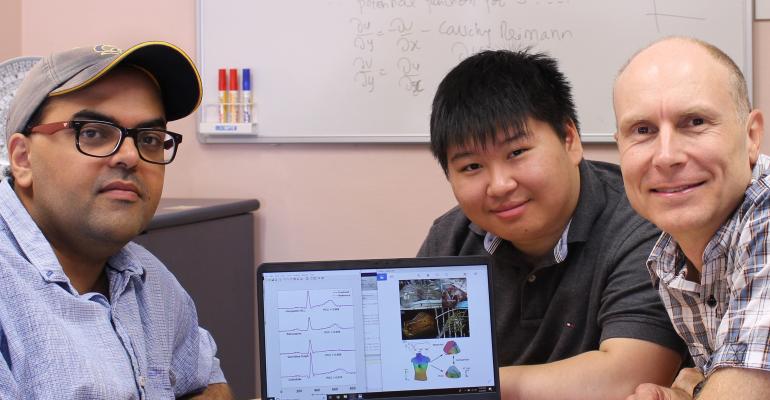
Dr Avinash Malik
Your heart on a chip
There are thousands of lines of code inside a cardiac implantable device, like a pacemaker, and that software is kept busy just trying not to over-react to the day-to-day heart rhythm changes a person goes through as they walk around, climb a few stairs, get cold, read a book, get a big fright or sleep.
It’s not unknown for patients to get shocked by their device when it detects a rhythm outside the parameters it’s been programmed to consider normal. Add to that the complexities of interactions with rhythm-changing drugs the patient may be taking for heart-related or other conditions, and pacemakers can get in a real tiz.
Cardiologists generally measure what the heart’s doing with an electrocardiogram (ECG), which measures the electrical signals from the outside of the body, but for finding electrical problems and tuning devices, it’s quite a clumsy measure. The cardiologist really needs to know what the signals are doing inside the heart (known as an electrogram or EGM), because that’s what the device sees. The only way to do that has been using sensors inserted by catheters through the arteries to the heart – an invasive and painful procedure for patients.
SfTI seed project researcher Avinash Malik, and his team Tommy Peng and Mark Trew, have been working on a solution to this problem with a computer modelling approach that uses a data chip to fine tune the device.
Avinash says the modelling does two things – translates the ECG readings to the probable EGM readings at the heart level, so the cardiologist can fine tune the device without invasive surgery; and also allows the cardiologist to look at predictions of what effect medications at various doses will have on the patient’s heart rhythm at the heart level (EGM) – a window into a world that in the past could be seen only by trial and experience.
The computer modelling, which used machine learning, is based on data from collaboration with Laura Bear from the IHU-LIRYC research lab in Bordeaux, France. She and her colleagues took thousands of EGM readings from pig hearts that were kept beating in a human-shaped tank filled with a solution to keep them alive and conduct electricity.

“We’ve been able to model that data and we can now predict from an ECG what the EGM readings will be with about 75 percent correlation,” Avinash says.
“It depends on a lot of variables, like how damaged the heart is, as to how well it can conduct electrical signals, so the model needs to be flexible enough to be tailored to each patient.”
The accuracy rate at predicting the effects of medications on the heart is even higher at about 97 percent.
“With both of those data sets, we can program a chip for a pacemaker that tells it what the heart level signals are going to be for that patient – what ‘normal’ looks like for them and what effect medications will have on their heart beat. It means the cardiologist can finely tune a pacemaker before it’s inserted, and the patient doesn’t have to go through repeated painful procedures to get it correctly adjusted.
Avinash says there’s still a way to go before the approach could be used in human trials and thinks the strongest interest will probably be from pacemaker manufacturers.
“There’s a lot of interest in a pacemaker that can be accurately adjusted based on ECG readings. But it’s a $16.9 billion industry, and a lot of people have been working on problems like this for 40 years. So there’s a lot of competition.”
The team’s next step will be to seek to incorporate the effect of the torso organs, such as lungs, and variations in skin and fat cover into the prediction techniques.
Top image (left to right): Dr Avinash Malik, Tommy Peng and Dr Mark Trew discuss the project at the University of Auckland.